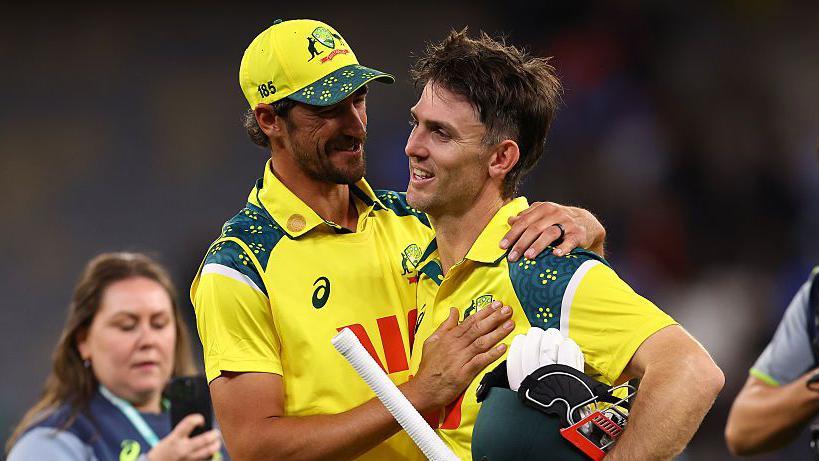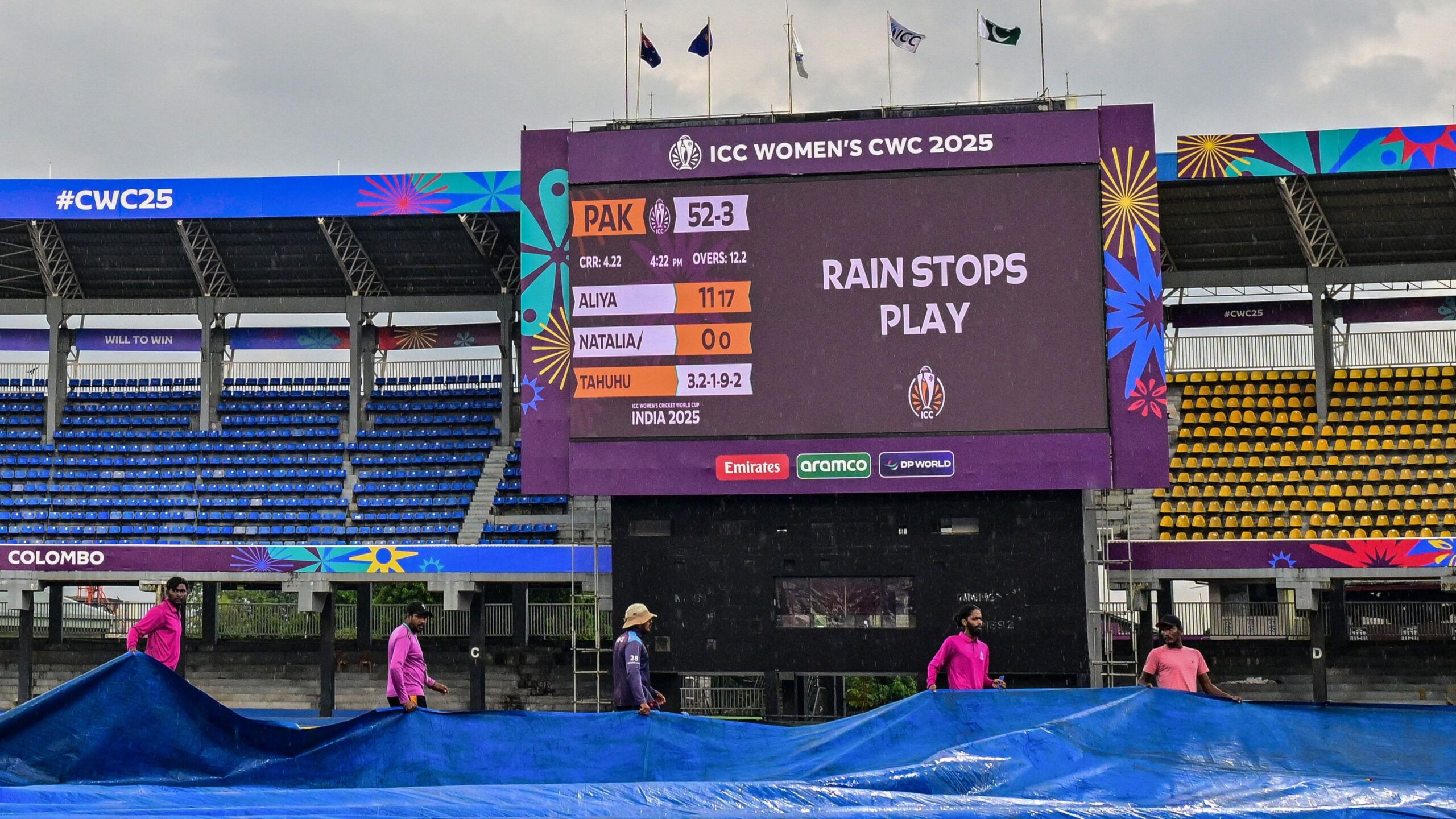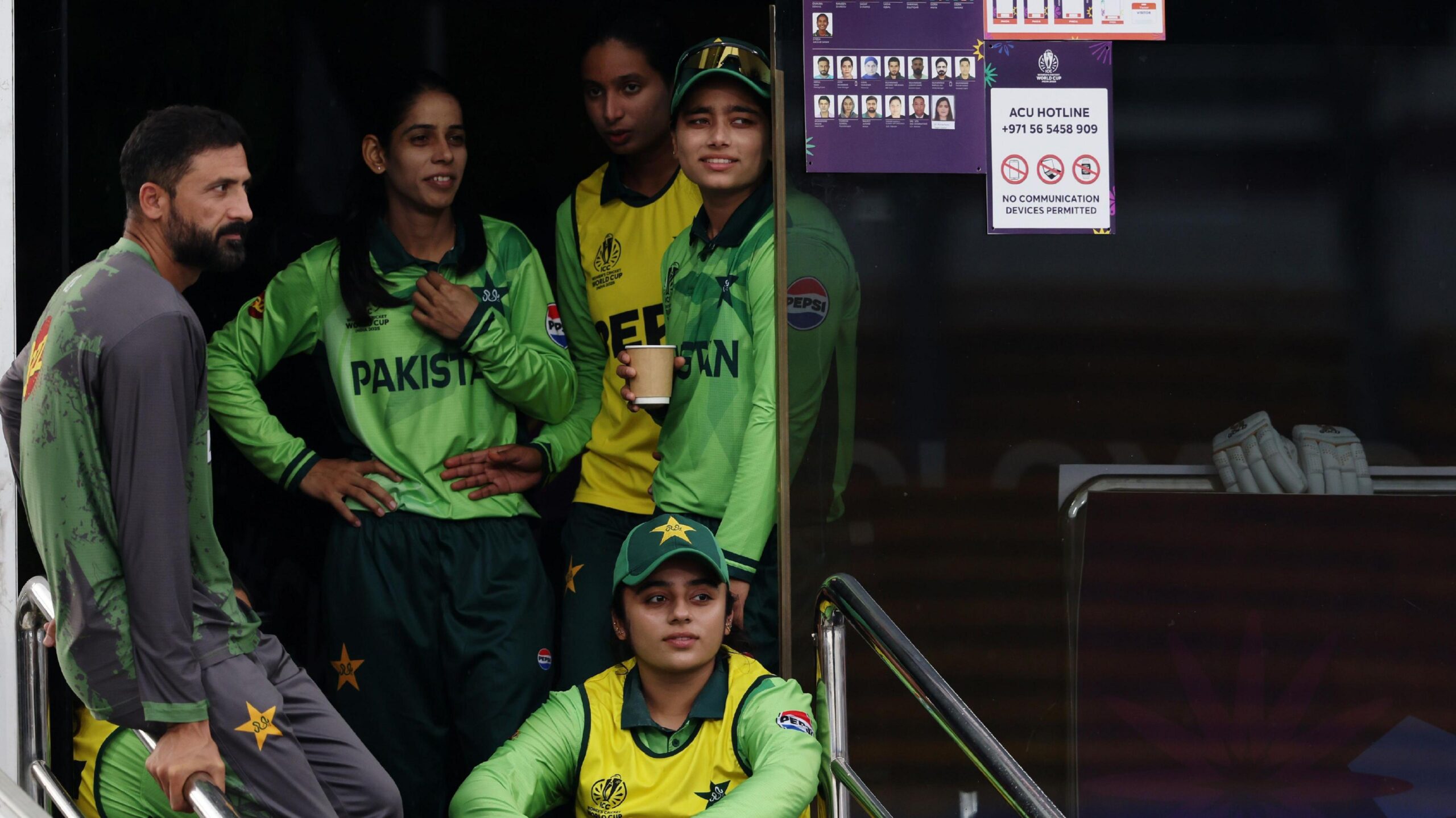To play this video you need to enable JavaScript in your browser.
This video can not be played
-
34 minutes ago
There have been bumps along the way, but it is starting to feel like England have turned a corner.
Earlier this year, in the aftermath of Charlotte Edwards’ appointment as head coach, a poor West Indies were swept aside with ease but it did little to convince fans and media that much had changed since the Ashes embarrassment.
Those concerns came to fruition as they were subsequently outplayed by India, and there have been wobbles here at the World Cup – notably the batting collapses in near-misses against Bangladesh and Pakistan.
But at Indore, a four-run win over India in front of a deafening, intimidating home crowd, England produced their most significant win of the Edwards/Nat Sciver-Brunt era as they sealed a semi-final spot with two group games remaining.
Previously, they had earned a reputation for buckling under pressure.
Consider the T20 World Cup last October, where catch after catch was spilled in a shocking group stage defeat by West Indies. See also a chase of 181 in the second Ashes one-day international in Melbourne, squandered as Amy Jones lost count of how many balls were left in the over.
No, this was not a knockout game, and that challenge is still to come. But England were on the brink of defeat, India needing 55 from 52 balls with Smriti Mandhana batting beautifully on 88.
Her soft dismissal creaked the door open, gave England an opportunity to seize – and this time, they pounced.
From losing games they should win, they are starting to win games they should lose.
England did not need to win this game to reach the semis – they play Australia next on Wednesday, who look close to unbeatable, followed by New Zealand where they would be strong favourites.
But they did need the win to prove to themselves they could win games like this.
After removing Pratika Rawal and Harleen Deol early, England were faced with one of the most formidable partnerships in Mandhana and Harmanpreet Kaur – and struggled.
Their partnership of 125 was a masterclass, Harmanpreet’s power combined with Mandhana’s finesse.
England bowled too wide to the left-handed opener, who scored heavily on the off-side, but the biggest difference between India and England’s other opponents so far is that they do not fear Sophie Ecclestone.
Mandhana was exceptional in sitting deep in the crease and playing the ball late, while Harmanpreet and later Deepti Sharma took the world number one bowler down the ground.
India threw the game away via their own mistakes but England deserve credit for how they closed it out, because until they needed nine from the last ball, victory was never certain.
But a notable difference from the past year is that England’s body language did not dip. They held their standards – the fielding fumbles did not creep in, they worked as a unit and fought until the last ball.
Ecclestone won the battle with Deepti, who slog-swept to Sophia Dunkley. The ball hung high in the air for what felt like an age, the crowd behind Dunkley roaring for it to be put down.
It was a straightforward chance but with the context of pressure, we have seen England drop many recently, with Alice Capsey and Emma Lamb also holding on to high-stakes chances earlier to dismiss Mandhana and Harmanpreet.
Basics, yes – but executing them has not always been the case for this side. This win is an important hurdle to overcome, one which should serve them well with the pressure cooker turning up a notch from now on.
To play this video you need to enable JavaScript in your browser.
This video can not be played
Middle-order worries still remain
England’s batters must have felt a huge relief to be presented with a flat surface in Indore, a contrast to the tricky, turning ones in Guwahati and Colombo.
Their match-winning 288 was lit up by Heather Knight’s sparkling 109, the century coming from just 86 balls, and that was the difference. England’s former skipper kicked on when Mandhana and Harmanpreet could not.
Of course, Edwards will be reluctant to change a winning team but there are still issues to be addressed in the batting line-up.
Jones’ fifty at the top of the order puts a tick in one box, and though the openers negotiated the new ball and added 73 for the first wicket, Tammy Beaumont looks out of sorts.
She scratched her way to 22 from 43 balls before being bowled attempting to sweep Deepti, but Knight and Sciver-Brunt steadied the ship as they so often do.
For the middle order of Dunkley, Lamb and Capsey, they were gifted a platform from which they could accelerate – something they have not been blessed with in the previous three matches where they have had to try and rescue perilous situations.
But even then, they could not fire. Between them in the tournament, they have scored 103 runs in 12 innings at an average of 8.58 and a strike-rate of 55.
When India were cruising to the total, it looked like England would rue the loss of three wickets for eight runs, but they were grateful that their opponents made a far greater mess of their own innings.
Still, England march on to the next challenge unbeaten, no less than the mouth-watering prospect of facing their greatest rivals Australia for the first time since the Ashes hammering.
To play this video you need to enable JavaScript in your browser.
This video can not be played











